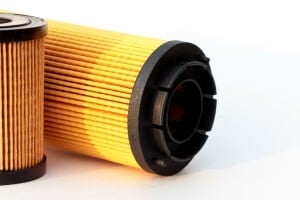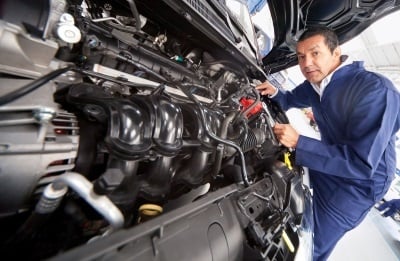Diesel Fuel Filtration Considerations
Today's advanced common rail diesel engines rely on their diesel fuel filtration system to make sure they can do their job to their peak performance....
Today's diesel engines perform better while being 99% cleaner than engines from just a decade or two ago. What’s the biggest difference between the common rail diesel engines of today and the engines of yesterday that leads to this being true?
It comes down to both the injectors and the filters. The former can't do what it needs to do without the latter.
Common rail diesel engines inject fuel differently than the long-standing diesel technology from decades past. Their design, with the ability to build up fuel pressure in a “common rail” that feeds the injectors, enables them to do things, from both a functional and performance standpoint, that Rudolf Diesel couldn’t have dreamed of.
Stuff like being able to inject fuel up to seven times into the same cylinder in the course of one piston stroke. All are controlled, of course, by an advanced computer that monitors everything going on to ensure the way the injectors operate ensures you get the most out of that engine.
To do what they need to do, common rail diesel injectors operate at much higher pressures than ever before. Today’s advanced generation common rail diesels can have injector pressures between 23,000 and 36,500 psi. This is many times higher than even the newer direct injection diesels from the 1990s that topped at out 7,250 psi.
These higher pressures mean these injection systems are so much more sensitive to outside contaminants like water and particulates. If they get damaged, they’re significantly more expensive to fix, too. This has led to the specifying of high-performance fuel filters that filter out much smaller particles than before. And this has implications for the user.
Old-school diesel fuel filters used to have a typical rating of around 10-20 microns. But we should take a moment to explain what this kind of jargon means.
It means they should filter out all particles above that given size, right? Not exactly. If a filter is “rated” at 10 microns, it means it should have “some ability” to capture particles as small as 10 microns. It's designed to capture particles "as small as" 10 microns. That’s a much different thing than assuming it means it's going to capture ALL of the particles 10 microns up. Realizing that should make it clear to us that the “10-micron rating” actually isn’t telling you everything you need to know.
What you really need to know are the Nominal rating and the Absolute rating of the filter. A filter with a nominal rating of 10 microns would have shown, through testing, to catch 50-90% of particles 10 microns and above in size. So that’s a little better. If the filter has an absolute rating of 10 microns, it has to catch at least 98.7% of particles 10 microns and above. That’s actually what most people think the simple “10 micron rating” label is telling them, when it actually isn’t.
For common rail diesel engines, 10- or 20-micron filtration just wouldn’t do. Common rail diesels will use a primary fuel filter rated at 10-30 micros, but then a secondary fuel filter rated down to 2-5 microns. And the industry is advancing toward 1-micron effective filtration.
To give you some perspective, 40 microns is about the lowest limit of visibility that the human eye can detect. But 2 microns is the size of a single bacterial cell.
What’s the performance difference between a 10-micron filter and a 2-micron filter? You might think that it’s an 80% difference since 2 is 80% less than 10. Or maybe you'd think it's a 5x different - 10 being five times as high as 2. But it’s actually much more than that.
If you assume that the particles are all spherical or circular (which they won’t all be, but for illustrative purposes, we’ll go with that), there’s actually a 96% difference in the size of space they have that will allow particles to go through. 96% is more than 80%, but still doesn’t accurately depict how big a difference that is.
If you flip the math around, what you find is that the 10-micron filter allows 25x more to pass through than the 2-micron filter. Putting another way, there’s a 5x raw difference between 10 and 2, but a 25x difference in the space they have to allow contaminants through.
So today’s common rail diesel fuel filters are going to be much, much more effective at protecting the engine.
Today's advanced common rail diesel engines rely on their diesel fuel filtration system to make sure they can do their job to their peak performance....

Diesel fuel filtration is still somewhat of a black box to many diesel users. They know it’s important but the details of it escape them. That’s not...

In the years we’ve written about diesel fuel maintenance, typical topics would include microbial contamination control and prevention and diesel fuel...